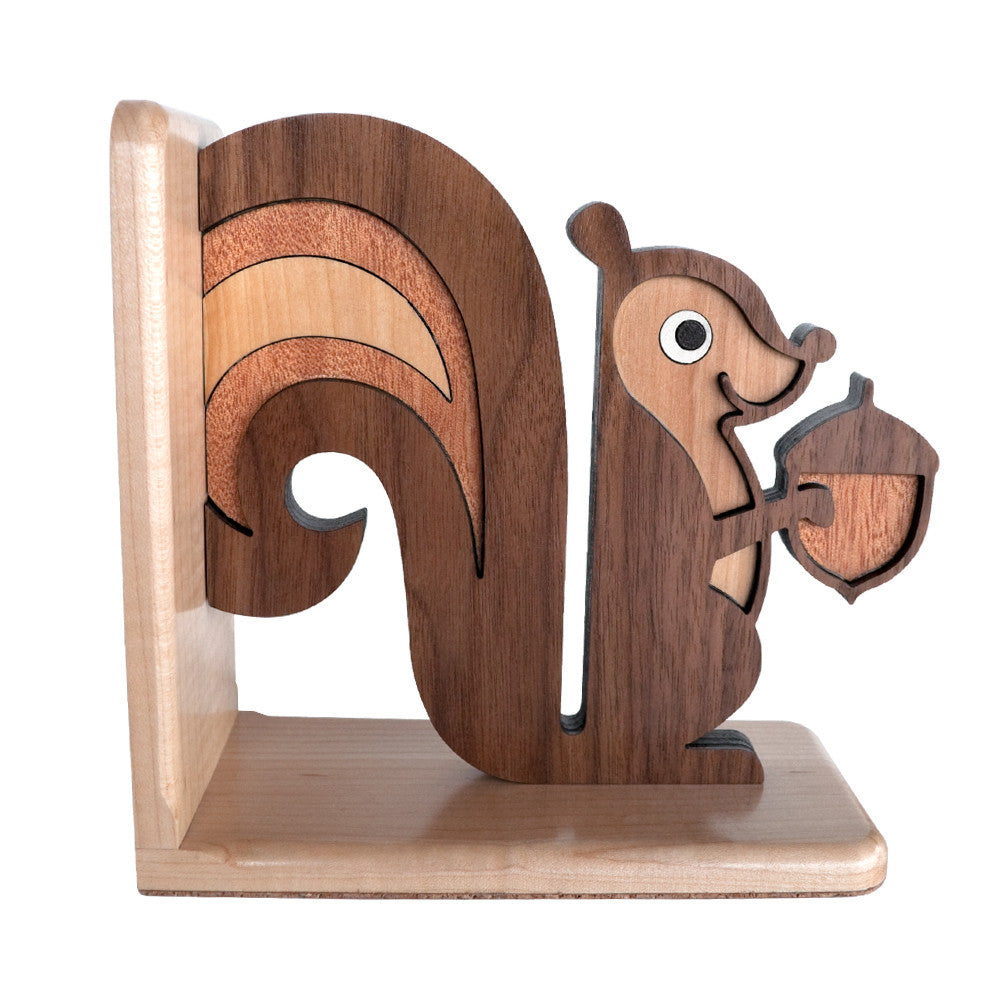
The discovery of bronze in Western Asia in the 4th century enabled people to create metal objects which were superior to those previoulsy possible because of its strength and hardness, and it has been used throughout the world for weapons, coins, tools, statuary and other decorative items.

These included the Seal, Elephant, Wolfhound and Porpoise. In 1944, at the time of the name change, several pieces that appeared in Viking’s first catalog had already been in production several years earlier under the New Martinsville name. The new Viking company retained all of New Martinsville’s molds and continued production through the 1950s. There is a lot of confusion among collectors regarding whether these figurines are Viking or New Martinsville. In 1944 the company name was changed to The Viking Glass Company.
#Squirrel bookends full#
In December 1941, they began advertising their new Swedish style glass – The Viking Line”, with the full intention of later changing their name. In 1941, NM completely revamped, remodeled and restyled the company in preparation for a completely different kind of glass production. Ĭlick on a photo below to view more detail about the item. The Horse (Head Up), Eagle, and the Nautilus Shell Vase molds were also owned by Wiel Freeman.

Designs for the Tigers, received at the NM mold shop in 1940 from Wiel Freeman, may have been made solely for the giftware trade as they do not appear in any New Martinsville catalogs or price lists. Major, high-end giftware distributors such as Wiel Freeman, Ebeling & Reuss, and Marks and Rosenfeld, would submit their own mold designs to NM for production.

Many of New Martinsville’s most collectible glass animals from 1938 to 1944 are featured here.Īctivity from “New Martinsville’s Private Mold Customers” during the late 1930s to the mid 1940s was an important part of NM business. (Heisey animals were used in the play.) Suddenly, everyone was collecting glass animals! Viking Glass continued the line of animal figurines through 1950s, and reissued older molds right up to the time they closed in 1986. Around that time, Tennessee Williams wrote his first successful play, “The Glass Menagerie, ”which won the New York Drama Critics Circle Award. In 1944 Viking became the new name of New Martinsville Glass. 1941 for “New decorative pieces in our heavy lusterous “Viking Crystal.” The ad also introduced the name Viking which reflected the “Swedish” style handmade quality glassware. From 1938 to1944 New Martinsville began producing solid glass animal figurines and bookends. Opened 1901 in New Martinsville, West Virginia“ with a 12 pot furnace and a 4 ton tank ” to manufacture tableware and glass novelties.


 0 kommentar(er)
0 kommentar(er)
